
A hairstyle, hairdo, haircut or coiffure refers to the styling of hair, usually on the human head but sometimes on the face or body. The fashioning of hair can be considered an aspect of personal grooming, fashion, and cosmetics, although practical, cultural, and popular considerations also influence some hairstyles.
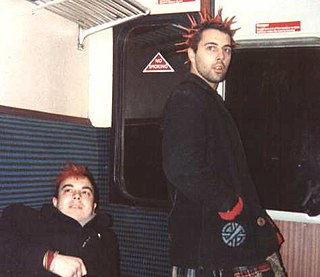
Punk fashion is the clothing, hairstyles, cosmetics, jewellery, and body modifications of the punk counterculture. Punk fashion varies widely, ranging from Vivienne Westwood designs to styles modeled on bands like The Exploited to the dressed-down look of North American hardcore. The distinct social dress of other subcultures and art movements, including glam rock, skinheads, greasers, and mods have influenced punk fashion. Punk fashion has likewise influenced the styles of these groups, as well as those of popular culture. Many punks use clothing as a way of making a statement.

A buzz cut, or wiffle cut, is a variety of short hairstyles, especially where the length of hair is the same on all parts of the head. Rising to prominence initially with the advent of manual hair clippers, buzz cuts became increasingly popular in places where strict grooming conventions applied. In several nations, buzz cuts are often given to new recruits in the armed forces. However, buzz cuts are also used for stylistic reasons.

Hair coloring, or hair dyeing, is the practice of changing the hair color. The main reasons for this are cosmetic: to cover gray or white hair, to alter hair to create a specific look, to change a color to suit preference or to restore the original hair color after it has been discolored by hairdressing processes or sun bleaching.

The afro is a hair style created by combing out natural growth of afro-textured hair, or specifically styled with chemical curling products by individuals with naturally curly or straight hair. The hairstyle can be created by combing the hair away from the scalp, dispersing a distinctive curl pattern, and forming the hair into a rounded shape, much like a cloud or puff ball.

The mohawk is a hairstyle in which, in the most common variety, both sides of the head are shaven, leaving a strip of noticeably longer hair in the center. Mohawk hairstyles have existed for thousands of years. As of the 21st century, they are most commonly associated with non-conformity.

Pomade is a greasy, waxy, or water-based substance that is used to style hair. It generally gives the user's hair a shiny, slick appearance. It lasts longer than most hair-care products, and often requires multiple washes for complete removal. The pomades of the 18th and 19th centuries consisted mainly of bear fat or lard. Lanolin, beeswax and petroleum jelly have been used extensively in modern pomades. The hold of pomades makes sculptured hairstyles such as the pompadour waves (hairstyle) possible.

Liberty spikes is hair styled into long, thick, upright spikes. The style, now associated with the punk subculture, is so named because of the resemblance to the diadem crown worn by the Statue of Liberty, itself inspired by the Roman goddess Libertas and god Sol Invictus.

Hi-top fade is a haircut where hair on the sides is cut off or kept very short while hair on the top of the head is grown long.

The conk was a hairstyle popular among African-American men from the 1920s up to early-mid 1960s. This hairstyle called for a man with naturally "kinky" hair to have it chemically straightened using a relaxer called congolene, an initially homemade hair straightener gel made from the extremely corrosive chemical lye which was often mixed with eggs and potatoes. The applier had to wear gloves and the solution timed just right on the applicant's head and then thoroughly rinsed out with cold water to avoid chemical burns. The desired outcome was for the newly straightened hair to be easily styled in the popular "conk" style of that era.
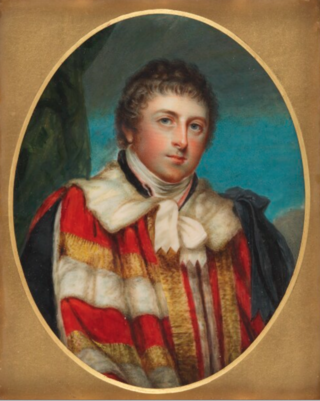
An eponymous hairstyle is a particular hairstyle that has become fashionable during a certain period of time through its association with a prominent individual.
The Rachel haircut, commonly known as simply "The Rachel", is an eponymous hairstyle popularized by American actress Jennifer Aniston. Named after Rachel Green, the character she played on the American sitcom Friends (1994–2004), Aniston debuted the haircut during the show's first season, and continued to wear it throughout its second season while the series was nearing peak popularity. Designed by Aniston's hairstylist Chris McMillan to repair her damaged hair and grow out her bangs, "The Rachel" is a voluminous shoulder-length haircut, with several distinct layers that frame and turn outwards from its wearer's face. It has been described as a variation on both the shag and bob haircuts.
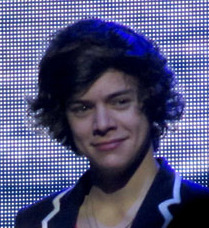
The wings haircut, also known the Mod haircut, Mop top, flippies, flow, Justin Bieber haircut, or skater hair is a popular hairstyle used in the skateboarding, surfer, mod, and preppy community. Typically long, the style can range from long and drooping below the eyes, to a shorter length. The haircut is typically wavy and, if straight, the length comes to halfway down the ears. Instead of lying on the wearer's ears, the hair flips up and comes straight out like an airplane wing, hence the name. The hairstyle was popular among men in the 1960s, 1970s, mid-late 2000s, early 2010s and 2020s.

The pompadour is a hairstyle named after Madame de Pompadour (1721–1764), a mistress of King Louis XV of France. Although there are numerous variations of the style for men, women, and children, the basic concept is having a large volume of hair swept upwards from the face and worn high over the forehead, and sometimes upswept around the sides and back as well.

Zachary David Alexander Efron is an American actor. Efron began acting professionally in the early 2000s and rose to prominence as a teen idol for his leading role as Troy Bolton in the High School Musical trilogy (2006–2008). During this time, he also starred in the musical film Hairspray (2007) and the comedy film 17 Again (2009).
Hairstyle products are used to change the texture and/or shape of hair.

Surfer hair is a tousled type of hairstyle, popularized by surfers from the 1950s onwards, traditionally long, thick and naturally bleached from high exposure to the sun and salt water of the sea. In the late 1960s and 1970s, the long hair and general lack of personal grooming was closely associated with hippie culture. Today, hairstyling companies brand their own hair gels, shampoos and hair wax to achieve the "surfer look" with hairstyles that are often shorter than traditionally, which often require more grooming to achieve the permanent hair lift or intentional windswept look. Amongst women, fashion magazines have referred to "sun streaked surfer hair" as a desirable look for women, although genuine surfer hair is often heavily damaged by the elements.
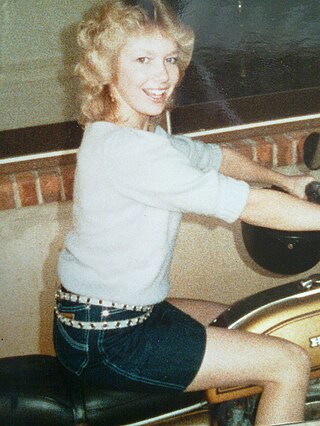
Hairstyles in the 1980s included the mullet, tall mohawk hairstyles, jheri curls, flattops, and hi-top fades, which became popular styles. Amongst women, large hair-dos, puffed-up styles, permanent waves, and softer cuts typified the decade. Big hair that was "often permed to achieve the desired volume" is especially associated with women of the mid 1980s as well as male rockstars of that era, especially of the glam metal genre. Television shows such as Dynasty helped popularize the high volume bouffant and glamorous image associated with it.
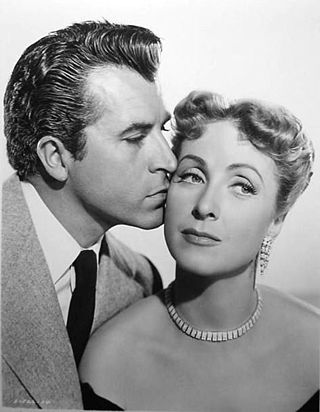
In the Western world, the 1950s were a decade known for experimentation with new styles and culture. Following World War II and the austerity years of the post-war period, the 1950s were a time of comparative prosperity, which influenced fashion and the concept of glamour. Hairstylists invented new hairstyles for wealthy patrons. Influential hairstylists of the period include Sydney Guilaroff, Alexandre of Paris and Raymond Bessone, who took French hair fashion to Hollywood, New York and London, popularising the pickle cut, the pixie cut and bouffant hairstyles.
The natural hair movement is a movement which aims to encourage people of African descent to embrace their natural, afro-textured hair. It originated in the United States during the 1960s, and resurged in popularity in the 2000s.
















